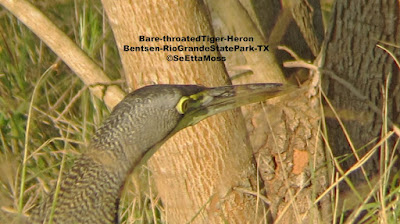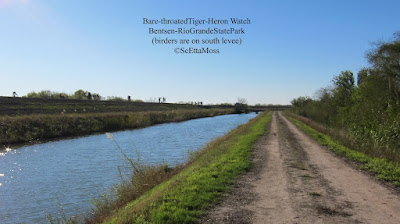BARE-THROATED TIGER-HERON : video of feeding
This video is copywrited--please ask for permission before use other than viewing on this blog. This is my first video clip and it has been a bit of pain to get uploaded but it is worth the hassle. This is videoscoped by videotaping the tiger-heron through a spotting scope--too cool. At the begnning of the clip the BARE-THROATED TIGER-HERON is standing still as it forages in it's slow, methodical manner. Then you will see it move it's head--watch very closely because it will jab down and almost behind in an exceptionally fast manner-puts new meaning to the phrase 'break-neck speed'! This is followed by swallowing movements (and my comments of astonishment as if I had never seen a creature swallow before), then some chewing movements. In the background someone talks about whether it is eating a grasshopper but I don't know that anyone was able to see what it ate. SeEtta


